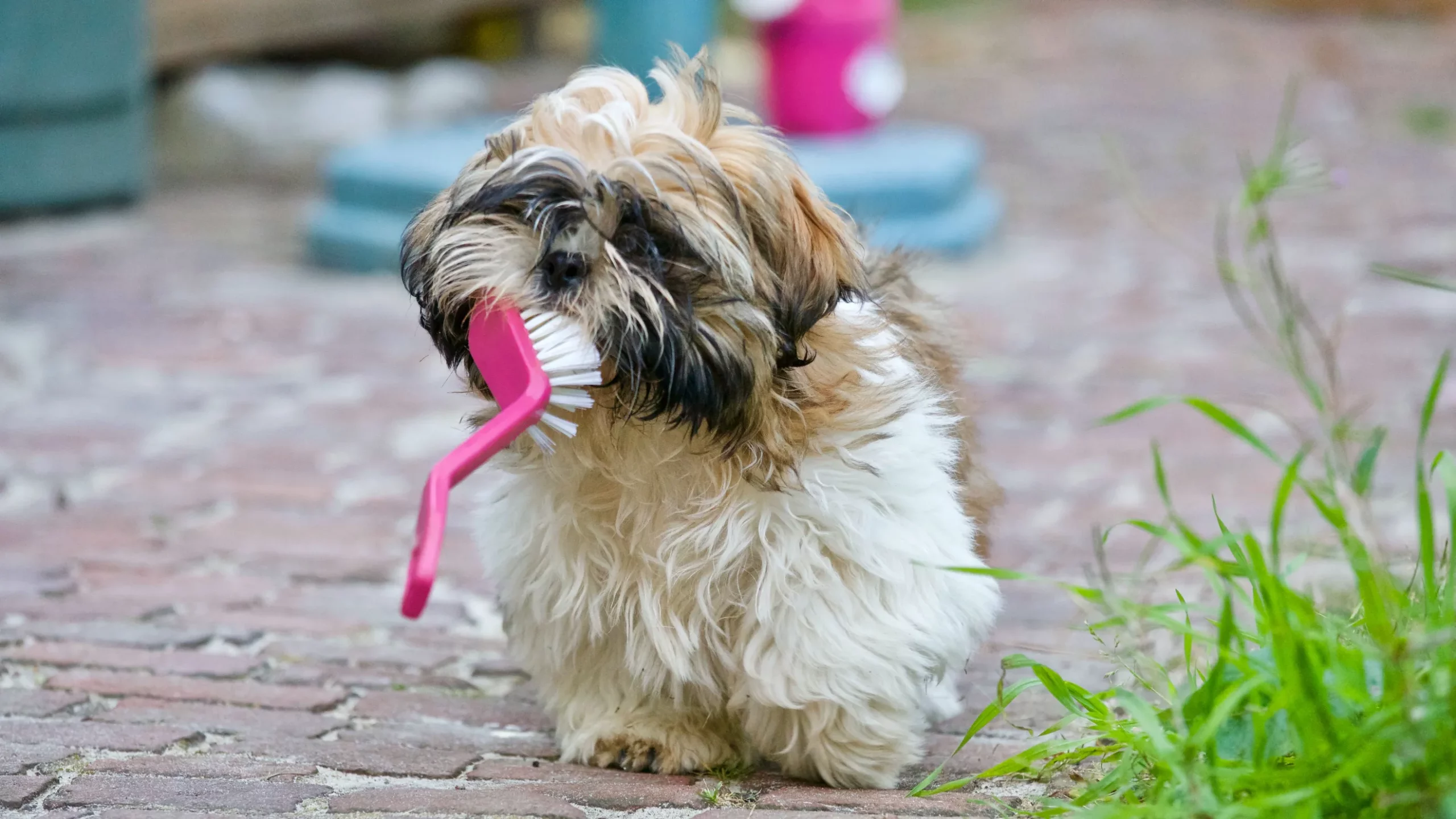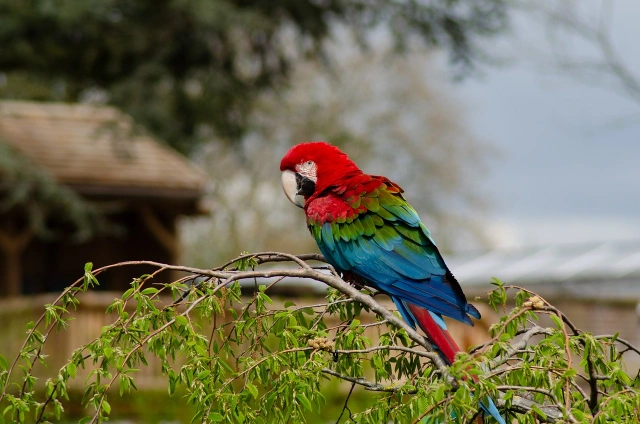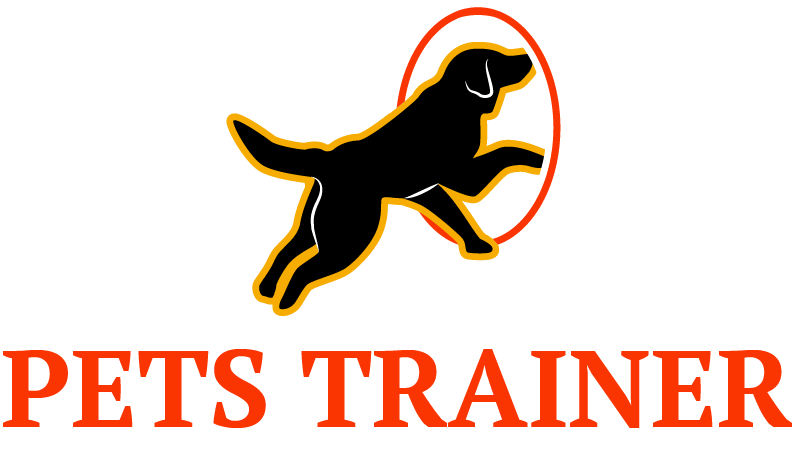Table of Contents
TogglePet ownership is a fulfilling experience that provides company, love, and joy. It does, however, come with obligations, one of which is grooming. Regular grooming is critical for your pet’s general health, and a pet grooming brush is a vital weapon in your armory.
As a veterinarian, in this article, I will go into the world of pet grooming brushes, investigating their many varieties, advantages, and how to select the best one for your furry buddy.
Types of pet grooming brush
| Name | Description |
| Slicker brush | A brush with fine, wire bristles that are bent at the tips. |
| Pin brush | A brush with long, metal pins that are attached to a rubber pad. |
| Dematting brush | A brush with special blades that help to cut through mats and tangles. |
| Undercoat brush | A brush with long, soft bristles that penetrate the undercoat. |
| Grooming glove | A glove with soft rubber bristles on the palm. |
Importance of grooming
Grooming is more than simply keeping your pet looking nice; it is also important for their health and comfort. Here’s why grooming is important:
Healthy Skin and Coat
Regular grooming is more than simply keeping your cat clean and appealing. It is extremely important in sustaining their entire health and well-being.
As an expert, I know that healthy skin and coat are the first indicators of a happy and contented pet. By using the right pet grooming brush, you can keep your furry friend’s coat in top condition and prevent common issues like matting, tangles, and excessive shedding.
Apart from improving their physical appearance, regular grooming stimulates blood circulation in your pet’s skin, promoting healthier hair growth.
It also helps distribute natural oils throughout their fur, keeping it moisturized and preventing dryness or flakiness. By brushing your pet regularly, you can identify any abnormalities like lumps, rashes, or parasites that may require immediate veterinary attention.
Bonding Time
Grooming your beloved pet goes beyond simple hygiene. It is a priceless bonding experience that enhances your emotional link with your pet. While the primary purpose of grooming is to keep their coat clean and healthy, it also provides an opportunity for quality interactions.
The gentle strokes of a pet grooming brush not only remove dead hair and promote blood circulation, but they also create a sense of calmness and trust in your pet.
As you embark on this grooming journey together, take a moment to observe their body language and reactions. Please pay attention to how they respond to each stroke and adjust accordingly.
By doing so, you are not only enhancing their physical well-being but also deepening the bond of understanding between the two of you. The study has shown that during grooming sessions, communication is key. Use soothing tones and positive reinforcement to make them feel safe and loved throughout the process.
Take these moments as an opportunity to show gratitude for their presence in your life, reinforcing positive emotions while keeping them well-groomed.
Early Detection of Issues
Regular grooming of your pets is not just about keeping them clean and looking their best. It also plays a crucial role in the early detection of various health issues that may otherwise go unnoticed.
According to research, brushing your pet on a regular basis using a pet grooming brush allows you to keep an eye on their skin and coat for any abnormalities or changes.
During grooming sessions, you may discover lumps or bumps under the fur that could indicate a potential health problem such as tumors or cysts. Brushing thoroughly helps you to check for parasites like fleas and ticks, which may cause a variety of ailments if left untreated.
Regular grooming helps remove dead hair and debris from your pet’s coat, reducing the chances of matting and tangling that could lead to uncomfortable skin conditions.
Making grooming a part of your pet’s care routine allows them to get frequent check-ups in the comfort of their own home. Early detection of issues through grooming can save you both time and money by preventing more significant health problems down the line.
Grooming Promotes Positive Behavior
Pets who are regularly groomed tend to be happier and less anxious or stressed out, which in turn promotes more positive behaviors from them, such as less frequent licking and scratching of fur or chewing their fur, among many other behaviors. This will result in positive and constructive interactions.
Choosing the Right Pet Grooming Brush
The best grooming brush for your pet is determined by their breed, coat type, and any special grooming requirements they may have:
Short-Haired Breeds
When it comes to grooming short-haired breeds, choosing the right pet grooming brush is essential. While these breeds may not require as much maintenance as their long-haired counterparts, regular brushing is still necessary to keep their coats healthy and shiny.
According to research, one popular option for short-haired breeds is a bristle brush. This brush has firm but delicate bristles that can easily penetrate the topcoat and remove dull hair while dispersing natural oils for a glossy finish.
Another great choice is a rubber curry brush, which not only helps in removing loose hair but also provides a soothing massage effect for your pet’s skin.
Its flexibility makes it perfect for getting into those hard-to-reach areas like behind the ears or along the belly. While selecting the best pet grooming brush for short-haired breeds may appear daunting at first, keep in mind that each dog has unique demands and preferences.
Heavy Shedders
When it comes to heavy shedders like German Shepherds and Chow Chows, finding the right pet grooming brush is essential. These breeds not only have thick coats but also tend to shed heavily, causing a never-ending battle with fur all over your home. This is where de-shedding tools like the Furminator come to the rescue.
The Furminator brush is specifically designed to remove loose hair from your pet’s undercoat without irritating their skin. Its unique design allows you to reach deep into their coat, efficiently capturing and removing loose fur. Not only does this help keep shedding under control, but it also promotes healthier skin and a cleaner coat for your furry friend.
One of the best things about using a de-shedding tool like the Furminator is that it significantly reduces the amount of loose hair around your home. Regular brushing sessions can minimize shedding by up to 90%, making it easier to maintain cleanliness in your living spaces. Less shedding means fewer furballs rolling around on your floors, carpets, and furniture.
Sensitive Skin
When it comes to pet grooming, choosing the right brush is essential, especially for pets with sensitive skin. One of the most suitable options for these pets is pin brushes or soft bristle brushes. T
he gentle pins or bristles on these brushes help in removing dirt and dead hair without causing any discomfort or irritation.
One breed that often requires gentle brushing is Greyhounds. With their short, thin coat and sensitive skin, using a harsh brush can be quite uncomfortable for them.
Pin brushes work wonders in this case as they have rounded tips that glide smoothly through their fur, providing a soothing experience while getting rid of loose hair.
Soft bristle brushes are also an excellent choice as they have less intensity but still do a fantastic job of keeping your pet’s coat clean and healthy.
Conclusion
In conclusion, a pet grooming brush is a must-have item for pet owners who want to keep their animals healthy and happy. Brushing not only eliminates excessive hair and keeps matting at bay, but it also improves circulation and encourages natural oil production in the skin.
With so many brush types available, it is critical to select one that is appropriate for your pet’s coat type and needs. By incorporating regular grooming sessions into your pet’s routine, you can ensure that they look their best and maintain optimal coat health.
FAQs
1. Why should I use a pet grooming brush?
Using a pet grooming brush regularly helps prevent matting, reduces shedding, promotes healthier skin, and improves the overall appearance of your pet’s coat.
2. How often should I groom my pet with a brush?
Brushing frequency is determined by your pet’s breed and coat type. In general, dogs with longer or thicker coats may need daily brushing, while shorter-haired breeds can be brushed once or twice a week.
3. Are there different types of pet grooming brushes available?
Yes, there are various types of grooming brushes, including slicker brushes for removing tangles, bristle brushes for smoothing the coat, de-shedding tools for reducing shedding, and rubber brushes for massaging the skin.
4. Can I use any brush on my cat or dog?
No, it’s important to choose a brush specifically designed for your pet’s needs. Dogs and cats have different coats and sensitivities, so using the right type of brush will ensure effective and safe grooming.
5. Will brushing my pet hurt them?
When used correctly, brushing should not hurt your pet. However, it’s essential to be gentle while brushing sensitive areas such as the belly or tail base. Start slowly and reward your furry friend with treats to create positive associations with brushing.

Dr. Usman Bajwa, a dedicated veterinarian with a passion for pets, brings years of expertise to the world of pet grooming. Through his blog, he shares valuable insights and practical tips to help pet owners provide the best care for their furry companions. With a focus on promoting the health and happiness of pets, Dr. Usman articles offer easy-to-follow guidance on grooming techniques. When he’s not writing, you can find him at his clinic or enjoying time with his own beloved pets.




